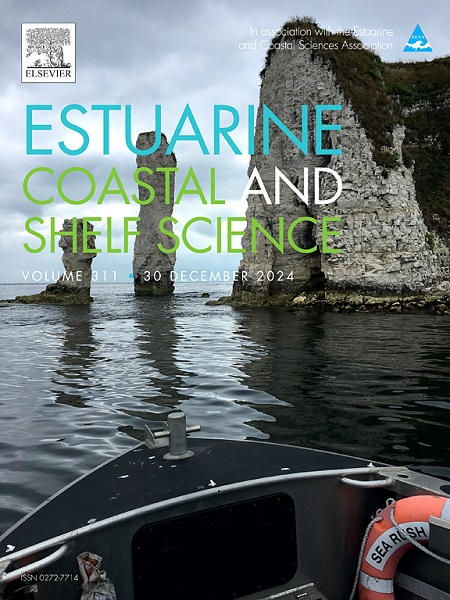Design and development of a low-cost GNSS-tracked surface drifter for investigating tidal currents in a creek environment
IF 2.6
3区 地球科学
Q1 MARINE & FRESHWATER BIOLOGY
引用次数: 0
Abstract
The tidal dynamics in estuarine and creek environments are quite complex and depend primarily on tides, waves, wind, water depth, and riverine inflow conditions. A proper understanding of tidal dynamics is very essential in terms of estuarine circulation, mixing and dispersion of pollutants and effective estuarine management. Lagrangian-based monitoring provides spatial and temporal variability compared with Eulerian-based measurement system. The present study proposes a low-cost Global Navigation Satellite System (GNSS) tracked shallow water surface drifter, developed considering minimal wind slip, higher submerged drag force, and low heave accelerations for different designs. A drifter design with four vertical fins and two damping discs attached at the top and bottom satisfied the design criteria and has been used in this study. A low-cost GNSS receiver u-blox Navigation Engine On-board (NEO) M8N was installed in the surface drifter considering the relative position error, velocity variability, and satellite visibility employing an Android smartphone-based GNSS receiver. Low-cost GNSS receiver recorded low positional error and low-velocity variability, and a higher percentage of satellite visbility was recorded during the stationary test. Field deployments were conducted with the surface drifter for different months. The estimated surface tidal current velocity showed monthly variability and was dependent on the tidal phase. Further, the trajectory of the surface drifter could properly identify the changes in flow direction across the creek due to phase shifts from high to low tides. The developed low-cost GNSS-tracked surface drifter can be effectively used to monitor the surface tidal dynamics in the creek environment.
求助全文
约1分钟内获得全文
求助全文
来源期刊
CiteScore
5.60
自引率
7.10%
发文量
374
审稿时长
9 months
期刊介绍:
Estuarine, Coastal and Shelf Science is an international multidisciplinary journal devoted to the analysis of saline water phenomena ranging from the outer edge of the continental shelf to the upper limits of the tidal zone. The journal provides a unique forum, unifying the multidisciplinary approaches to the study of the oceanography of estuaries, coastal zones, and continental shelf seas. It features original research papers, review papers and short communications treating such disciplines as zoology, botany, geology, sedimentology, physical oceanography.

 求助内容:
求助内容: 应助结果提醒方式:
应助结果提醒方式:


